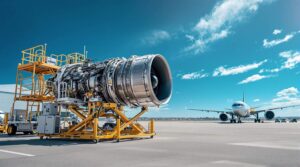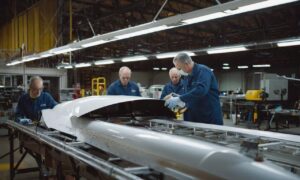In the realm of aviation, the presence of unusable fuel in an aircraft raises questions about efficiency, safety, and engineering choices. To delve into the intricacies of this phenomenon, we must first understand the reasons behind the existence of unusable fuel in aircraft tanks.
The Engineering Design
One key reason for the presence of unusable fuel lies in the design of aircraft fuel systems. Engineers meticulously plan the layout of fuel tanks to ensure the aircraft’s balance and stability during flight. The unusable fuel zone serves as a buffer to prevent any potential imbalance that could arise due to fuel sloshing or shifting during various flight maneuvers.
Weight Distribution and Balance
Weight distribution is a critical factor in aviation, impacting an aircraft’s performance and safety. The unusable fuel zone contributes to maintaining the desired center of gravity, ensuring that the aircraft remains stable throughout its journey. This design choice helps pilots control the aircraft more effectively, especially during takeoff, landing, and turbulent conditions.
Fuel System Safety
Another crucial aspect is the safety of the aircraft’s fuel system. The unusable fuel zone acts as a precautionary measure, preventing any contaminants or debris from entering the engine. This design helps in protecting the engine components, enhancing reliability, and reducing the risk of engine failure due to foreign objects.
Regulatory Compliance
The aviation industry operates under stringent regulations, and aircraft manufacturers adhere to these guidelines in their designs. Regulatory bodies often stipulate the minimum amount of unusable fuel that must be incorporated into an aircraft’s fuel system. This standardization ensures a consistent approach to safety across the industry.
Fuel Measurement Accuracy
Precision in fuel measurement is paramount for flight planning and operational safety. The unusable fuel section allows for more accurate readings of the usable fuel, providing pilots with reliable information about the actual amount of fuel available for the journey. This precision is essential for proper fuel management and planning during flights.
Conclusion
In summary, the presence of unusable fuel in an aircraft is a result of thoughtful engineering decisions aimed at enhancing safety, stability, and operational reliability. The design considerations, weight distribution, safety measures, regulatory compliance, and fuel measurement accuracy collectively contribute to the functionality and efficiency of an aircraft’s fuel system.
Fuel Efficiency and Environmental Impact
Addressing concerns beyond the immediate aircraft operation, fuel efficiency has become a focal point in aviation. The presence of unusable fuel reflects the industry’s commitment to optimizing fuel consumption and, consequently, minimizing its environmental footprint. Engineers aim to strike a balance between operational requirements and environmental responsibility, seeking innovative ways to enhance fuel efficiency while maintaining safety standards.
Technological Innovations
Advancements in aviation technology play a pivotal role in shaping fuel system designs. Ongoing research focuses on developing fuel systems that can further reduce the volume of unusable fuel, utilizing advanced materials and smart technologies. These innovations aim to improve fuel utilization, reduce overall weight, and contribute to a more sustainable aviation industry.
Frequently Asked Questions
1. Why is there a need for an unusable fuel zone?
The unusable fuel zone is essential for maintaining aircraft stability, preventing fuel imbalance, and adhering to safety standards set by aviation authorities.
2. How do engineers determine the size of the unusable fuel zone?
The size is meticulously calculated based on factors such as aircraft weight, center of gravity requirements, and regulatory guidelines.
3. Can advancements in fuel measurement technology reduce the size of the unusable fuel zone?
Ongoing technological developments aim to enhance fuel measurement accuracy, potentially influencing the size of the unusable fuel zone in future aircraft designs.
| Benefits of Unusable Fuel Zone | Challenges and Considerations |
|---|---|
| Enhanced Stability | Regulatory Compliance |
| Improved Safety | Environmental Impact |
| Accurate Fuel Measurement | Technological Integration |
Future Prospects and Industry Trends
Looking ahead, the aviation industry is poised for continued evolution. Future aircraft designs may witness a reevaluation of the unusable fuel concept as technology progresses. The industry’s commitment to sustainability and efficiency is likely to drive further innovations, shaping the future of aircraft fuel systems.






